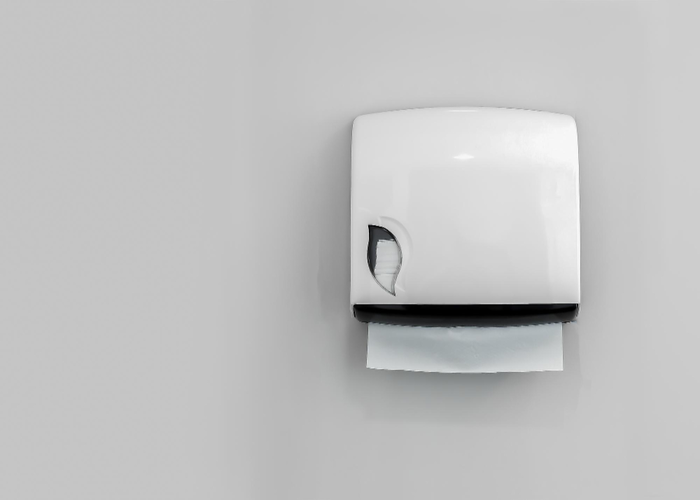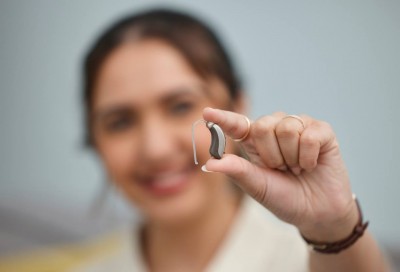Revolutionizing Hygiene: The Benefits of Touchless Paper Towel Dispensers
Warning: Undefined variable $post in /home/dietofli/public_html/wp-content/plugins/code-snippets/php/snippet-ops.php(584) : eval()'d code on line 3
Warning: Attempt to read property "ID" on null in /home/dietofli/public_html/wp-content/plugins/code-snippets/php/snippet-ops.php(584) : eval()'d code on line 3
The estimated reading time is 7 minutes
Warning: Undefined variable $post in /home/dietofli/public_html/wp-content/plugins/oxygen/component-framework/components/classes/code-block.class.php(115) : eval()'d code on line 3
Warning: Attempt to read property "ID" on null in /home/dietofli/public_html/wp-content/plugins/oxygen/component-framework/components/classes/code-block.class.php(115) : eval()'d code on line 3

The Science Behind Touchless Technology: How It Works
Understanding Sensors: The Brain Behind the Dispenser
Touchless paper towel dispenser is a remarkable innovation that leverages advanced sensor technology to enhance hygiene and user experience. At the heart of these devices are infrared sensors, which utilize laser and light technology to detect motion and proximity. Once a user approaches the dispenser, the sensor activates, dispensing a measured amount of paper towel without the need for physical contact. This operation is not merely a convenience; it embodies a sophisticated combination of engineering principles and environmental awareness.
The design of these sensors is predicated on the principles of photometry and telecommunication. For example, infrared sensors work by emitting light waves that are absorbed or reflected by nearby objects. The dispenser registers this reflection, triggering the mechanism to release the towel. This process is fast, efficient, and can be tuned based on the specific needs of the installation environment, whether it’s a high-traffic area like a public restroom or a low-use setting like a home kitchen. Moreover, some of the more sophisticated models are equipped with smart technology that can adapt the volume of paper towels dispensed based on user habits, further optimizing their functionality.
Mechanics of Touchless Operation: Less Contact, More Hygiene
The mechanics of touchless operation speak volumes about its contribution to a hygienic environment. Traditional towel dispensers require manual handling, which inherently introduces the risk of cross-contamination. In contrast, touchless dispensers eliminate this risk by offering a completely no-contact experience. In settings where hand hygiene is paramount—such as hospitals, restaurants, and public restrooms—the benefits become even more pronounced.
Touchless technology is pivotal in ensuring that users do not touch potentially contaminated surfaces, thereby reducing the spread of harmful bacteria and viruses. The mechanics behind these dispensers often involve a combination of electrical and mechanical components that work in unison to ensure reliability and longevity. Users can confidently pull paper towels, knowing that they are engaging with a sanitary solution designed to protect public health. Furthermore, touchless technology often incorporates built-in systems that minimize paper waste by dispensing just the right amount needed, thereby aligning with both efficiency and hygiene practices.
Health Benefits: Why Touchless Is the Way to Go
Reducing Germ Spread: A Barrier Against Contamination
One of the most compelling reasons to adopt touchless paper towel dispensers is the significant reduction in germ spread they offer. According to multiple studies, touch surfaces in public spaces can harbor a multitude of pathogens, including E. coli, salmonella, and influenza viruses. A touchless dispenser acts as a barrier against such contamination, providing users with a reliable method of drying their hands without direct contact. As germ awareness has risen in recent years, particularly in the wake of global health crises, individuals and organizations alike have become acutely aware of the need for solutions that prioritize sanitation.
Furthermore, research indicates that proper hand drying is crucial for reducing pathogenic load on the hands. When using conventional drying methods—like air dryers or manual towels—potential contact with contaminated surfaces can unwind the hygiene benefits achieved through washing. Touchless dispensers, therefore, ensure that users can maintain cleanliness at every stage of hand hygiene, directly translating to lower infection rates in public health contexts. This advantage emphasizes the importance of innovative hygiene practices in safeguarding health, especially in densely populated environments.
Boosting Public Health: The Impact on Communities
The broader implications of touchless paper towel dispensers on public health cannot be overstated. Communities that adopt touchless technology often see a marked reduction in the incidence of communicable diseases. In schools, for example, where children are more susceptible to illnesses due to their developing immune systems and frequent interactions, implementing touchless dispensers can vastly improve health outcomes. Fewer colds and flus coming home from school can lead to lower absenteeism and a more productive learning environment.
Public health organizations and facilities benefit immensely from integrating touchless dispensers as well. Hospitals and clinics are continuously striving to enhance their infection prevention protocols, and the switch to touchless technology represents a significant step forward. By promoting practices that reduce the transfer of pathogens, healthcare facilities can decrease patient infections, leading to shorter hospital stays and lower healthcare costs. The importance of hygiene in public spaces, combined with the push for technology that simplifies hygiene regimens, sees touchless dispensers bridging a critical gap in health initiatives.
Sustainability and Efficiency: Touchless Dispensers and the Environment
Eco-Friendly Materials: Reducing Waste in the Long Run
As the world becomes increasingly conscious of environmental issues, the manufacturing of touchless paper towel dispensers reflects a commitment to sustainability. Many of these dispensers are constructed from eco-friendly materials, including recycled plastics and biodegradable options that minimize long-term landfill impact. This shift aligns with a global effort to reduce disposable waste while maintaining hygienic standards—a delicate balance that manufacturers are keen to achieve.
In addition to the materials used, touchless dispensers often incorporate design strategies that reduce paper waste during usage. These systems are engineered to provide an optimal amount of towel with each pull, translating into significant reductions in paper consumption. Traditional dispensers can lead to an overuse of paper towels, contributing to waste and environmental degradation. In contrast, the precision of touchless technology promotes a more sustainable approach to paper use, enabling facilities to contribute positively to environmental stewardship.
Cost-Effectiveness: Saving Resources While Staying Clean
The cost-effectiveness of touchless paper towel dispensers is another compelling argument in their favor. While the initial investment in touchless technology can be higher than that of traditional dispensers, the long-term savings are often substantial. By controlling paper consumption and reducing waste, businesses and facilities can experience lower costs associated with inventory management and supply purchases. Additionally, the decreased risk of illness among employees or patrons translates to fewer sick days, which significantly impacts overall productivity and business costs.
In a competitive marketplace where operational efficiency is paramount, the move to touchless dispensers represents a smart investment. Many organizations are adopting a holistic approach to cost management, considering the health and safety of their patrons and employees as a critical part of their overall financial strategy. By investing in touchless technology, they position themselves as leaders in health innovation, promoting an image of commitment to both hygiene and environmental responsibility.
User Experience: The Everyday Impact of Touchless Convenience
Modernizing Spaces: Elevating Commercial and Home Environments
The user experience provided by touchless paper towel dispensers extends beyond mere functionality; it enhances the overall aesthetic and operation of various spaces. In commercial environments, such as restaurants, office buildings, and public facilities, touchless dispensers serve as modern fixtures that attract a health-conscious clientele. The sleek design and seamless operation of these devices communicate attention to cleanliness and professionalism, influencing customer perceptions positively.
At home, the incorporation of touchless technology transforms mundane tasks into more hygienic experiences. Homeowners are embracing touchless dispensers for kitchens and bathrooms, recognizing the convenience and assurance of sanitation they provide. This trend dovetails with a broader movement toward smart home technology, where consumers prioritize seamless integration of health-focused devices into their daily routines, further reflecting the growing expectation for convenience and cleanliness in all aspects of life.
User-Friendly Design: Accessibility for Everyone
Touchless paper towel dispensers are designed with user-friendliness in mind, addressing the needs of diverse populations, including children, the elderly, and individuals with disabilities. The ease of use associated with these devices enhances accessibility, allowing all individuals to benefit from improved hand hygiene without the inversion of physical contact. Not only do touchless dispensers cater to the needs of various users, but they also contribute to a more inclusive environment where everyone can perform basic hygiene tasks safely and independently.
This emphasis on user experience also extends to the maintenance of the dispensers themselves. Many touchless paper towel dispensers are designed for easy refilling and cleaning, minimizing downtime and ensuring that they can serve the public effectively. The combination of thoughtful design, practical functionality, and enhanced hygiene benefits showcases how touchless dispensers are not just a trend but a vital component in modern hygiene practices across diverse settings.














